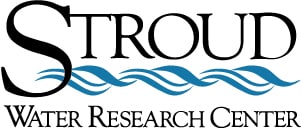Model My Watershed Technical Documentation References
- Barry, D.A.J., D. Goorahoo, and M.J. Goss. 1993. Estimation of nitrate concentrations in groundwater using a whole farm nitrogen budget. J. Environ. Qual. 22: 767–775.
- Bureau of Reclamation. 2013. Downscaled CMIP3 andCMIP5 climate and hydrology projections: Release of downscaled CMIP5 projections, comparison with preceding information, and summary of user needs. Denver, Colorado: U.S. Department of the Interior, Bureau of Reclamation, Technical Services Center.
- Deliman, P.N., R.H. Glick, and C.E. Ruiz, 1999. Review of Watershed Water Quality Models. U.S. Army Corps of Engineers, Tech. Rep. W-99-1, 26 pp.
- Ensign, S. 2020. Modeling future climate for Model My Watershed. HydroShare: doi:10.4211/hs.60058ceda8334e68be141516c5b8de3f
- Evans, B.M., D.W. Lehning, K.J. Corradini, G.W. Petersen, E. Nizeyimana, J.M. Hamlett, P.D. Robillard, and R.L. Day. 2002. A comprehensive GIS-based modelling approach for predicting nutrient loads in watersheds. J. Spatial Hydrology 2(2).
- Evans, B.M., S.A. Sheeder, and D.W. Lehning, 2003. A spatial technique for estimating streambank erosion based on watershed characteristics. J. Spatial Hydrology 3(1).
- Fleming, R.J. 1990. Impact of agricultural practices on tile water quality. Proc. ASAE Summer Meeting, June 24-27, Columbus, Ohio.
- Haith, D.A., and L.L. Shoemaker. 1987. Generalized watershed Lloading functions for stream flow nutrients. Water Resources Bulletin 23(3): 471–478.
- Haith, D.A. 1993. RUNQUAL: Runoff Quality from Development Sites: Users Manual. Dept. Agricultural and Biol. Engineering, Cornell University, 34 pp.
- Huber, W.C., and R.E. Dickinson. 1988. Storm water management model, version 4: User’s manual. Cooperative agreement CR–811607. U.S. Environmental Protection Agency, Athens, Georgia.
- Hydrologic Engineering Center. 1977. Storage, treatment, overflow, runoff model (STORM). U.S. Army Corps of Engineers, Davis, California.
- Maimone, M., S. Malter, J. Rockwell, and V. Raj. 2019. Transforming global climate model precipitation output for use in urban stormwater applications. J. Water Resour. Plann. Manage 145(6): 04019021.
- Mauer, E.P., L. Brekke, T. Pruitt, and P.B. Duffy. 2007. Fine resolution climate projections enhance regional climate change impact studies. EOS Transactions of AGU 88: 504.
- Nolan, B. T., and K.T. Hitt. 2006. Vulnerability of shallow groundwater and drinking-water wells to nitrate in the United States. Environ. Sci. Technol. 40: 7834–7840.
- Patni, N.K., L. Masse, and P.Y. Jui. 1996. Tile effluent quality and chemical losses under conventional and no-tillage: flow and nitrate. Trans. of ASAE, 39(5): 1665–1672.
- Smith, D.B., W.F. Cannon, L.G. Woodruff, F. Solano, and K.J. Ellefsen. 2014. Geochemical and mineralogical maps for soils of the conterminous United States. U.S. Geological Survey, Open-File Report 2014–1082, 386 pp.
- Taylor, K.E., R.J. Stouffer, and G.A. Meehl. 2012. An overview of CMIP5 and the experiment design. Bulletin of the American Meteorological Society 93: 485–98.
- Tan, C.S., C.F. Drury, W.D. Reynolds, P.H. Groenevelt, and H. Dadfar. 2002. Water and nitrate loss through tiles under a clay loam soil in Ontario after 42 years of consistent fertilization and crop rotation. Agricul., Ecosys. & Environment. 93: 121–130.
- Tarboton, D. G., and D. P. Ames. 2001. Advances in the mapping of flow networks from digital elevation data, in World Water and Environmental Resources Congress, Orlando, Florida, May 20–24, ASCE.
- Tarboton, D. G., R. L. Bras, and I. Rodriguez-Iturbe. 1992. A physical basis for drainage density, Geomorphology 5(1/2): 59–76.
- Tarboton, D. G., R. L. Bras, and I. Rodriguez-Iturbe. 1991. On the extraction of channel networks from digital elevation data, Hydrologic Processes, 5(1): 81–100.
- U.S. Environmental Protection Agency. 1999. Protocols for developing nutrient TMDLs. EPA 841-B-99-007. Office of Water (4503 F), Washington, D.C.
- U.S. Soil Conservation Service. 1986. Urban hydrology for small watersheds. Technical Release NO. 55 (2nd edition). U.S. Department of Agriculture, Washington, D.C.
- Vanoni, V.A. (Ed.). 1975. Sedimentation Engineering. American Society of Civil Engineers, New York, New York.

WikiWatershed is an initiative of Stroud Water Research Center. The Stroud Center seeks to advance knowledge and stewardship of freshwater systems through global research, education, and watershed restoration.
Documentation Contributors
- Anthony Aufdenkampe, Ph.D., LimnoTech
- David Arscott, Ph.D., Stroud Water Research Center
- Barry Evans, Ph.D., Penn State Institutes of Energy and the Environment
- David Tarboton, Ph.D., Utah State University
- Matt McFarland, Azavea (now Element 84)
- Steven Kerlin, Ph.D., Stroud Water Research Center
- Sara Geleskie Damiano, Stroud Water Research Center
Collaborating Organizations
- Academy of Natural Sciences of Drexel University
- Azavea (now Element 84)
- Concord Consortium
- LimnoTech
- Millersville University
- Penn State Institutes of Energy and the Environment
- University of Washington
- Utah State University
See the Model My Watershed page for more information about these organizations and individuals.
